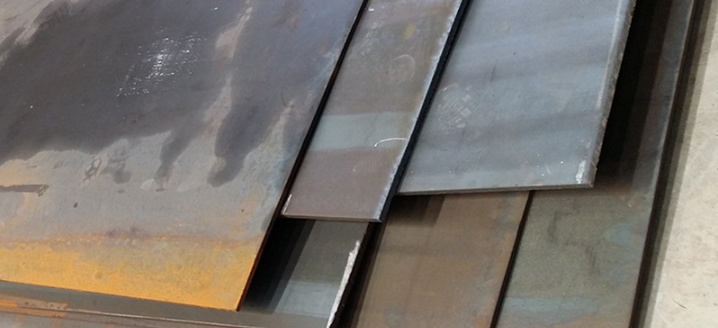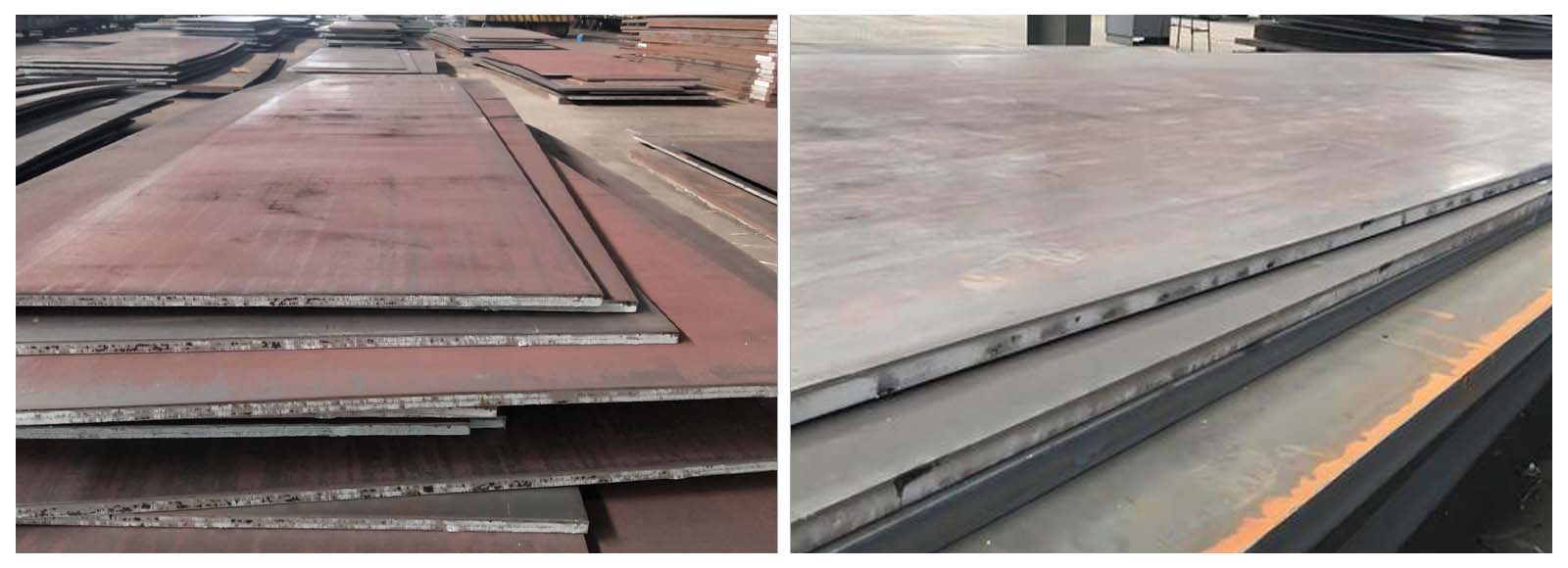Boiler and vessel steel plate, also known as pressure vessel steel plate, is a kind of steel plate used for manufacturing boilers, pressure vessels, and storage tanks. These plates are specifically designed to withstand high temperatures and pressure, making them suitable for containing fluids and gases under extreme conditions.
The primary purpose of boiler and vessel steel plates is to ensure the safe operation of equipment exposed to high-pressure environments. These plates are manufactured with specific chemical compositions and mechanical properties to provide excellent resistance to corrosion, cracking, and deformation caused by the internal pressure of the vessel.
Typically, boiler and vessel steel plates are made from carbon steel or low-alloy steel, as they offer good strength and toughness at elevated temperatures. These steels are often alloyed with elements such as manganese, silicon, and nickel to enhance their mechanical properties and improve their corrosion resistance.
The manufacturing process of boiler and vessel steel plates involves carefully controlled rolling, heat treatment, and quenching procession to achieve the desired material properties. The plate undergoes rigorous quality testing, including mechanical testing, ultrasonic examination, and impact testing, to ensure they meet the required standards and specifications.
Boiler and vessel steel plates are widely applied in various industries, including power generation, oil and gas, chemical processing, and manufacturing. They are used to manufacture the construction of boilers, pressure vessels, heat exchangers, storage tanks, and other equipment that handle high-pressure fluids and gases.
In summary, a boiler and vessel steel plate is a specialized steel plate designed to withstand high temperatures and pressure. And its work is to ensure the safe operation of boilers, pressure vessels, and storage tanks in demanding industrial applications. These plates offer excellent resistance to corrosion, cracking, and deformation, making them crucial components in high-pressure environments.

The following are a few standards commonly used in the boiler plate field in China, the United States, the United Kingdom, and Japan:
China Standard:
GB 713-2014: Steel plates for boilers and pressure vessels
GB 3531-2014: Steel plates for low temperature pressure vessels
American standard:
ASTM A516/A516M: Standard specifies technical requirements for carbon steel plates for medium and low-temperature pressure vessels.
ASTM A387/A387M: Standard specification for alloy steel plates used for high and low-temperature service.
British Standards:
BS 1501-1: Technical specification for flat carbon steel plates for boilers and pressure vessels.
BS EN 10028-2: Technical specification for pressure vessel steel plates for high temperature and high-pressure equipment.
Japanese Standards:
JIS G3115: Standard specification for heat-resistant steel plates used in the manufacture of pressure vessels.
JIS G3103: Standard specification for carbon steel and molybdenum steel plates for boilers and other pressure vessels.
In the steel industry, boiler vessel plate standards vary, and so do the Steel Grades. The following are the common boiler vessel plate standards in each country:
China National standard:
Q245R, Q345R, Q370R, 16MnDR, 15CrMoR, 09MnNiDR, 12MnNiVR, 14Cr1MoR, 12Cr2Mo1R, 12Cr1MoVR, 13MnNiMoR, 18MnMoNbR, 15MnNiDR, 20MnMoR
European Standard:
P265GH, P295GH, P275NH, P355GH, P355NH, P355NL, P460NH
American Standard:
SA515Gr60/65/70, SA516Gr60/65/70, SA285GrC, A537CL, SA662GrC, SA299A/B, SA203E/DSA302GrC/B, SA387Gr11/12/22
Japanese Standard:
SB410, SPV355, SB450
German Standard:
19Mn6, 15Mo3
China National Standard:
According to GB 713-2014, the size, weight, and allowable deviation of boiler vessel plates can be specified by different grades and thicknesses. The following are some common grades and their corresponding requirements:
Boiler vessel plate grades: Q245R, Q345R, Q370R, 15CrMoR, 14Cr1MoR, 12Cr2Mo1R, 12Cr1MoVR, 16MnDR, 09MnNiDR, 15MnNiDR
Thickness range:8mm-300mm
Width range: 1500mm-4020mm
Length range: 5000mm-18800mm
Single sheet weight: up to 60 tons
American National Standard:
According to ASTM A516/A516M, the dimensions, weights, and allowable deviations of boiler & vessel steel plates can be specified according to different grades and specifications. The following are some common provisions:
Dimensions:
Standard thicknesses of boiler vessel plates range from 1/8 inch (3.2 mm) to 12 inches (305 mm).
Standard widths of boiler vessel plates range from 36 inches (914 mm) to 120 inches (3048 mm).
Standard lengths of boiler vessel plates range from 96 inches (2438 mm) to 480 inches (12192 mm).
Weight:
The weight of a boiler & vessel steel plate depends on its size, thickness, and density.
Allowable Deviations:
The permissible deviations of boiler & vessel steel plates are determined according to specific grades and specifications.
According to ASTM A387/A387M, the following are the general requirements for dimensions, weights, and allowable deviations for boiler vessel plates:
Dimensions:
The thickness of boiler vessel plates usually ranges from 5mm to 200mm.
Width: 1,500mm - 4,000mm
Length: 3,000mm - 12,000mm
Weight:
The weight of boiler vessel plates depends on the specific size and thickness.
The exact weight can be determined by calculation or by referring to the relevant tables and formulas.
Permissible deviation:
The allowable length deviation is generally ±25mm.
The allowable width deviation is generally ±2%.













